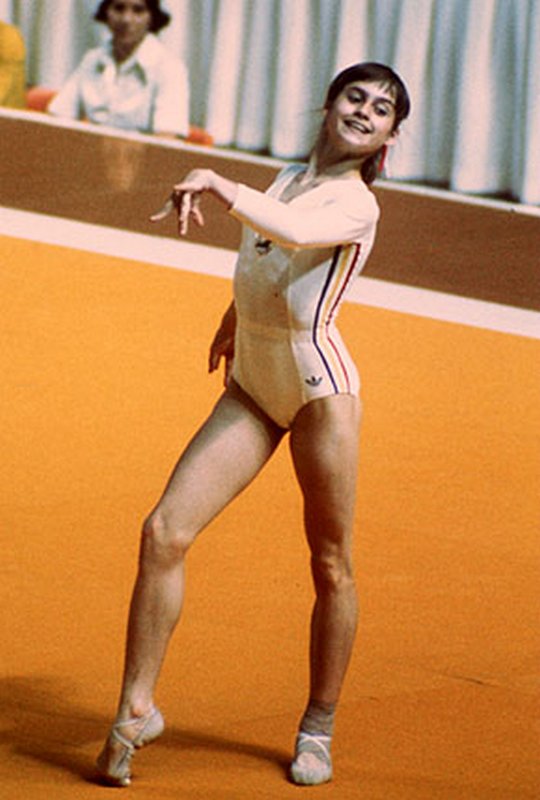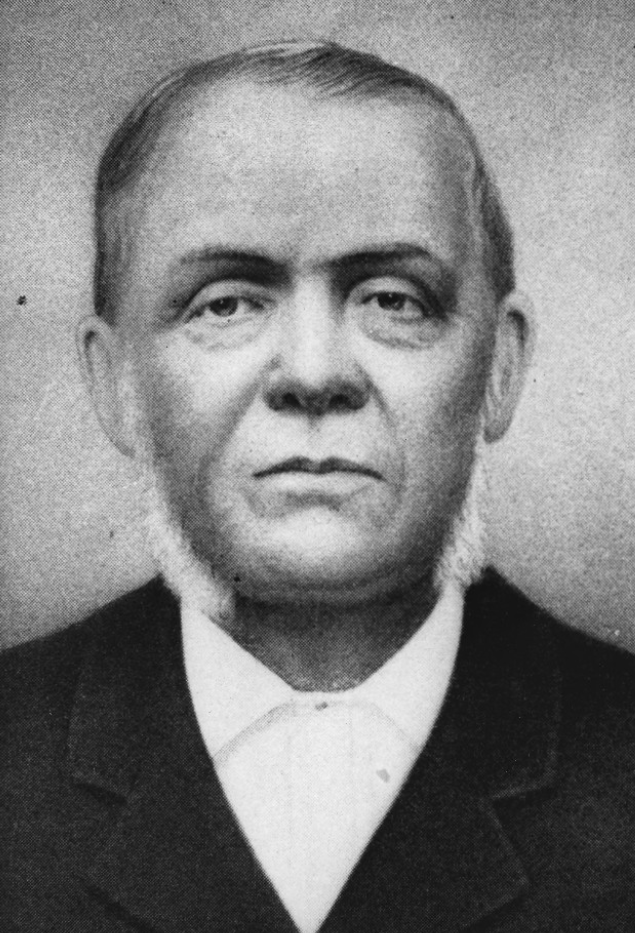|
Ludmila Ezhova
Ludmila Ezhova Grebenkova ( (Lyudmila Yezhova Grebenkova), born 4 March 1982) is a Russian former competitive gymnast. She won bronze in the team event at the 2004 Summer Olympics and four medals at the World Championships. Career Ezhova was a mainstay of the Russian team from the late 1990s to the mid-2000s. She also represented Russia at the 2008 Olympics in Beijing where she competed only balance beam. She was particularly noted for her work on balance beam where she was a four (4) time world and European medalist, including a gold medal. Her balance beam routines were characterized by a wide array of difficult acrobatic skills connected in immediate, unusual sequencing. In 1997, Ezhova placed 8th in the all-around at Russian Championships. The following year she placed 10th in the all-around at the Russian Cup. In the Spring of 1998, she competed on uneven bars and balance beam in the team final at European Championships in Saint Petersburg, Russia. Individually, she earned a ... [...More Info...] [...Related Items...] OR: [Wikipedia] [Google] [Baidu] |
Simona Amânar
Simona Amânar (; born 7 October 1979) is a Romanian former artistic gymnast. She is a seven-time Olympic and ten-time World Championship medalist. Amânar helped Romania win four consecutive world team titles (1994–1999), as well as the 2000 Olympic team title. She is also the 2000 Olympic all-around champion. She has a vault named after her, one of the most difficult in women's gymnastics, and was inducted into the International Gymnastics Hall of Fame in 2007. Biography Simona Amânar is an ethnic Aromanian. Career 1994–1995 In 1994, her first year on the senior national team, Amânar contributed to Romania's team titles at the World and European Championships. Amânar began to excel as an individual performer at the 1995 European Cup, placing second in the all-around behind Svetlana Khorkina of Russia and winning gold on both vault and floor exercise. At the 1995 World Championships, she helped Romania secure its second consecutive world team title and became co-ch ... [...More Info...] [...Related Items...] OR: [Wikipedia] [Google] [Baidu] |
Gymnastics Floor
In gymnastics, the floor is a specially prepared exercise surface, which is considered an apparatus. It is used by both male and female gymnasts. The gymnastics event performed on the floor is called floor exercise. The English abbreviation for the event in gymnastics scoring is FX. A spring floor is used in all of gymnastics to provide more bounce, and also help prevent potential injuries to lower extremity joints of gymnasts due to the nature of the apparatus, which includes the repeated pounding required to train it. Cheerleading also uses spring floors for practice. The sprung floor used for indoor athletics, however, is designed to reduce bounce. The apparatus The apparatus originated as a 'free exercise' for men, very similar to the floor exercise of today. Most competitive gymnastics floors are spring floors. They contain springs and/or a rubber foam and plywood combination which make the floor bouncy, soften the impact of landings, and enable the gymnast to gain heigh ... [...More Info...] [...Related Items...] OR: [Wikipedia] [Google] [Baidu] |
Gymnastics Balance Beam
The balance beam is a rectangular artistic gymnastics apparatus and an event performed using the apparatus. Both the apparatus and the event are sometimes simply referred to as "beam". The English abbreviation for the event in gymnastics scoring is BB. The beam is a small, thin beam which is typically raised from the floor on a leg or stand at both ends. The balance beam is only performed competitively by female gymnasts. Beams are usually covered with leather-like material and are only four inches wide. Balance beams used in international gymnastics competitions must conform to the guidelines and specifications set forth by the International Gymnastics Federation ''Apparatus Norms'' brochure. Several companies manufacture and sell beams, including AAI (USA), Janssen Fritsen (Europe) and Acromat (Australia). Most gymnastics schools purchase and use balance beams that meet the FIG's standards, but some may also use beams with carpeted surfaces for practice situations. While learning ... [...More Info...] [...Related Items...] OR: [Wikipedia] [Google] [Baidu] |
Gymnastics Uneven Bars
The uneven bars or asymmetric bars is an artistic gymnastics apparatus. It is made of a steel frame. The bars are made of fiberglass with wood coating, or less commonly wood. The English abbreviation for the event in gymnastics scoring is UB or AB, and the apparatus and event are often referred to simply as "bars". The bars are placed at different heights and widths, allowing the gymnast to transition from bar to bar. A gymnast usually adds white chalk to the hands so that they can grip the bar better. The apparatus Uneven bars used in international gymnastics competitions must conform to the guidelines and specifications set forth by the International Gymnastics Federation Apparatus Norms brochure. Several companies manufacture and sell bars, including AAI in the United States, Jannsen and Fritsen in Europe, and Acromat in Australia. Many gyms also have a single bar or a set of uneven bars over a loose foam pit or soft mat for learning new skills to provide an additional le ... [...More Info...] [...Related Items...] OR: [Wikipedia] [Google] [Baidu] |
Gymnastics Vault
The vault is an artistic gymnastics apparatus which gymnasts perform on, as well as the skill performed using that apparatus. Vaulting is also the action of performing a vault. Both male and female gymnasts perform the vault. The English abbreviation for the event in gymnastics scoring is VT. The apparatus Early forms of the vault were invented by German Friedrich Ludwig Jahn. The apparatus itself originated as a "horse", much like the pommel horse but without the handles; it was sometimes known as the vaulting horse. The horse was set up with its long dimension perpendicular to the run for women, and parallel for men.What's With That Weird New Vault? an August 2004 "Explainer" article from '''' [...More Info...] [...Related Items...] OR: [Wikipedia] [Google] [Baidu] |
Charlotte, North Carolina
Charlotte ( ) is the most populous city in the U.S. state of North Carolina. Located in the Piedmont region, it is the county seat of Mecklenburg County. The population was 874,579 at the 2020 census, making Charlotte the 16th-most populous city in the U.S., the seventh most populous city in the South, and the second most populous city in the Southeast behind Jacksonville, Florida. The city is the cultural, economic, and transportation center of the Charlotte metropolitan area, whose 2020 population of 2,660,329 ranked 22nd in the U.S. Metrolina is part of a sixteen-county market region or combined statistical area with a 2020 census-estimated population of 2,846,550. Between 2004 and 2014, Charlotte was ranked as the country's fastest-growing metro area, with 888,000 new residents. Based on U.S. Census data from 2005 to 2015, Charlotte tops the U.S. in millennial population growth. It is the third-fastest-growing major city in the United States. Residents are referr ... [...More Info...] [...Related Items...] OR: [Wikipedia] [Google] [Baidu] |
International Gymnastics Federation
The International Gymnastics Federation (French: Fédération Internationale de Gymnastique, FIG) is the body governing all disciplines of competitive gymnastics. Its headquarters is in Lausanne, Switzerland. It was founded on July 23, 1881, in Liège, Belgium, making it the world's oldest existing international sports organisation. Originally called the European Federation of Gymnastics, it had three member countries—Belgium, France and the Netherlands—until 1921, when non-European countries were admitted and it received its current name. The federation sets the rules, known as the Code of Points (gymnastics), Code of Points, that regulate how gymnasts' performances are evaluated. Seven gymnastics disciplines are governed by the FIG: artistic gymnastics, further classified as men's artistic gymnastics (MAG) and women's artistic gymnastics (WAG); rhythmic gymnastics (RG); aerobic gymnastics (AER); acrobatic gymnastics (ACRO); trampolining (TRA); Double mini trampoline (DMT ... [...More Info...] [...Related Items...] OR: [Wikipedia] [Google] [Baidu] |
Code Of Points (gymnastics)
The ''Code of Points'' is a rulebook that defines the scoring system for each level of competition in gymnastics. There is not a universal international ''Code of Points'', and every oversight organization — such as the FIG (Fédération Internationale de Gymnastique), NCAA Gymnastics, and most national gymnastics federations — designs and employs its own unique ''Code of Points''. The FIG Code of Points The FIG Code of Points is defined in a public document provided by the Federation. Gymnasts competing at lower levels or outside the FIG's jurisdiction (e.g., NCAA gymnastics and local club teams) may not be scored according to the FIG code. 2006 Revised Code In 2006, the ''Code of Points'' and the entire gymnastics scoring system were completely overhauled. The change stemmed from the judging controversy at 2004 Olympics in Athens, which brought the reliability and objectivity of the scoring system into question, and arguments that execution had been sacrificed for diffi ... [...More Info...] [...Related Items...] OR: [Wikipedia] [Google] [Baidu] |
Gymnastics At The 2008 Summer Olympics
At the 2008 Summer Olympics, three gymnastics disciplines were contested: artistic gymnastics, rhythmic gymnastics and trampoline. The artistic gymnastics events were held at the Beijing National Indoor Stadium on August 9–19. The rhythmic gymnastics events were held at the Beijing University of Technology Gymnasium on August 21–24. The trampoline events were also held at the Beijing National Indoor Stadium on August 16–19. Competition schedule All times are China Standard Time (UTC+8) Artistic gymnastics Rhythmic gymnastics Medal summary Artistic gymnastics Men's events Women's events Rhythmic gymnastics Trampoline Medal table Qualification Champions Gala The traditional Gymnastics Champions Gala took place on August 20 at the National Indoor Stadium. Participants are mainly selected from the 2008 Olympic trampoline and artistic gymnastics, as well as medalists from world championships. In addition, some Chinese pop stars appeared in the Gala. The perf ... [...More Info...] [...Related Items...] OR: [Wikipedia] [Google] [Baidu] |
2004 European Women's Artistic Gymnastics Championships
The 25th European Women's Artistic Gymnastics Championships were held from 29 April to 2 May 2004 in Amsterdam. Medalists Medal table Combined Seniors Juniors Seniors Team The team competition also served as qualification for the individual finals. The top eight placing teams are shown below; the other teams competing were Bulgaria, Greece, Switzerland, Germany, Czech Republic, Belgium, Poland, Belarus, Slovakia, Finland, Austria, Norway, Lithuania, Hungary, Cyprus and Iceland. Individual all-around Vault Uneven bars Balance beam Floor Juniors Team Individual all-around Vault Uneven bars Balance beam Floor References * * {{2004 in artistic gymnastics 2004 European Artistic Gymnastics Championships 2004 in European sport International gymnastics competitions hosted by the Netherlands Gym A gymnasium, also known as a gym, is an indoor location for athletics. The word is derived from the ancient Greek term " gymnasium". They ... [...More Info...] [...Related Items...] OR: [Wikipedia] [Google] [Baidu] |
Anaheim
Anaheim ( ) is a city in northern Orange County, California, part of the Los Angeles metropolitan area. As of the 2020 United States Census, the city had a population of 346,824, making it the most populous city in Orange County, the 10th-most populous city in California, and the 56th-most populous city in the United States. Anaheim is the second-largest city in Orange County in terms of land area, and is known for being the home of the Disneyland Resort, the Anaheim Convention Center, and two major sports teams: the Los Angeles Angels baseball team and the Anaheim Ducks ice hockey club. Anaheim was founded by fifty German families in 1857 and incorporated as the second city in Los Angeles County on March 18, 1876; Orange County was split off from Los Angeles County in 1889. Anaheim remained largely an agricultural community until Disneyland opened in 1955. This led to the construction of several hotels and motels around the area, and residential districts in Anaheim soon foll ... [...More Info...] [...Related Items...] OR: [Wikipedia] [Google] [Baidu] |




